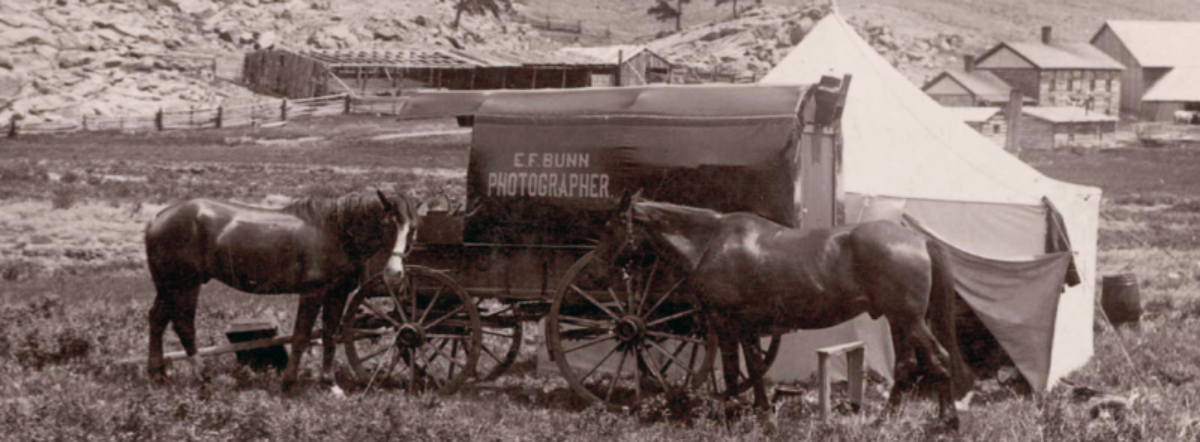Amos Snuffin Bennet was born on December 20, 1869 in Omaha, Nebraska to Elisha Bennett III and Esther Ann Snuffin Bennett. The family moved to Arapaho County in Colorado Territory a few months after his birth. By 1892, Amos Bennet lived in Axial, Colorado, a town that no longer exists in Moffat County. Like his peers, A. G. Wallihan and his wife, Mary Augusta Wallihan, Bennet specialized in making photographs of wild game, landscapes and portraits. Bennet often served as a guide to hunters and fishermen visiting the area, photographically documenting their adventures. His work won second prize in a contest offered by Forest and Stream magazine.
Bennet excelled as an athlete, riding his bicycle nearly 200 miles over the mountains from Denver to Axial, an early instance of mountain biking. He wrote an essay about his journey for the August 1893 issue of Sports Afield. He often took his camera and his rifle along on local rides. One day while out photographing elk, he later shot an antelope with his rifle. He slung the more than 200 pound beast over his shoulder, and then rode seven miles back home on his bicycle.
On another occasion, Bennet crawled on his hands and knees to sneak up on a herd of antelope with his camera. Bennet reported in Cycling West that “I had crawled about half the distance necessary when suddenly I dimly perceived something gliding right out from under my hand seemingly, and the next instant heard the sharp whir-r-r of a rattlesnake. It is needless to say I stopped right there! When I got my eyes mopped out and could see plainly I was glad I did. To my startled vision the ground ahead of me seemed alive with the reptiles. The whole prairie was one writhing, twisting mass and the air was vibrating like a buzz saw with the alarum of their tails.” He used his Kodak to courageously capture images of the snakes.
During the summer of 1897, snake charmer, Harry Davis, hired Bennet to provide rattlesnakes for a Denver display during the festival of Mountain and Plain. Bennet captured twenty snakes at Fortification Rocks, a location north of Craig, known for its substantial snake population. Bennet used a five-foot long pole to handle the snakes but Davis wrestled the snakes with his hands, receiving a non-lethal bit on his finger.
On September 28, 1898, Bennet married Alice Belle Caster. On their wedding trip, the couple visited Meeker and Denver, Colorado. There is no further mention of Bennet’s photography in the local press. After his marriage, he worked as an engineer and carpenter. In 1903, the Bennet’s departed Colorado for points west, settling in Klamath Falls Oregon in 1909. Two years later, Amos S. Bennet died unexpectedly of a heart attack at the young age of 41. He left his wife and two young children.
Thank you to Keegan Martin, Digital Imaging Assistant, History Colorado for providing the scan and Elisabeth Parker, former assistant chief, Prints & Photographs Division, Library of Congress for proof-reading.



